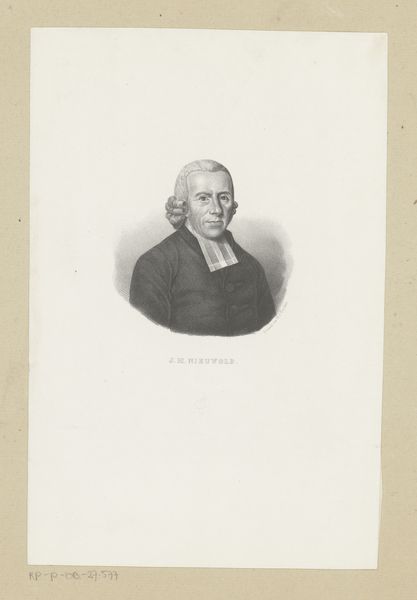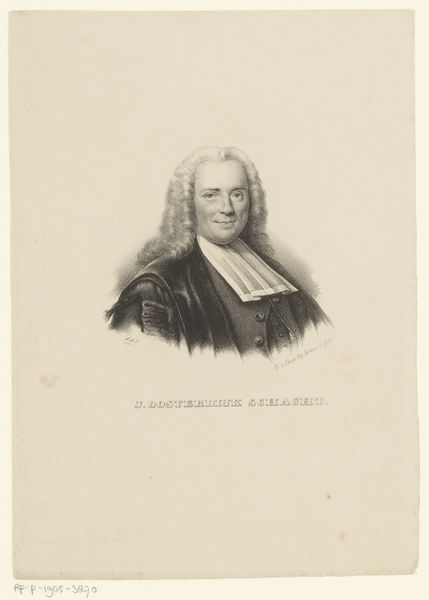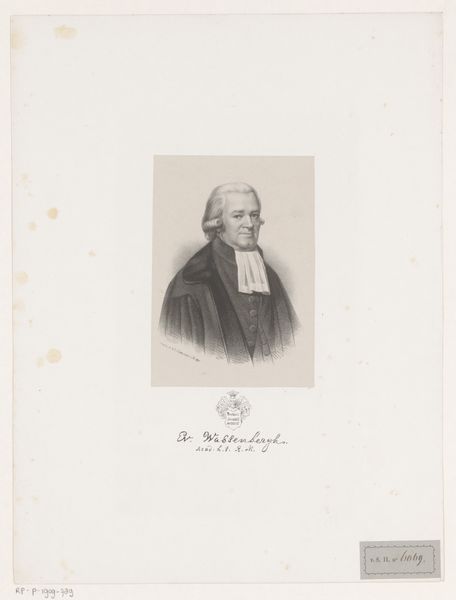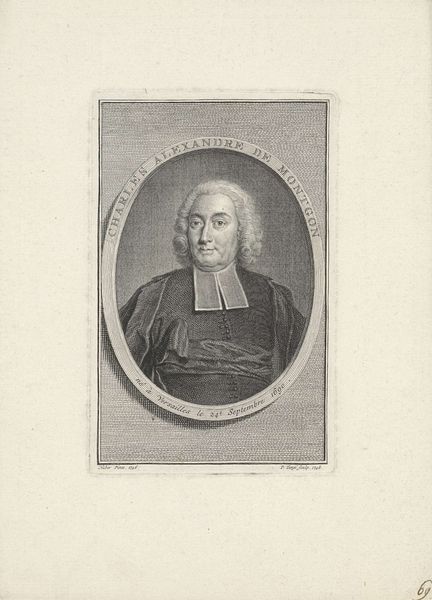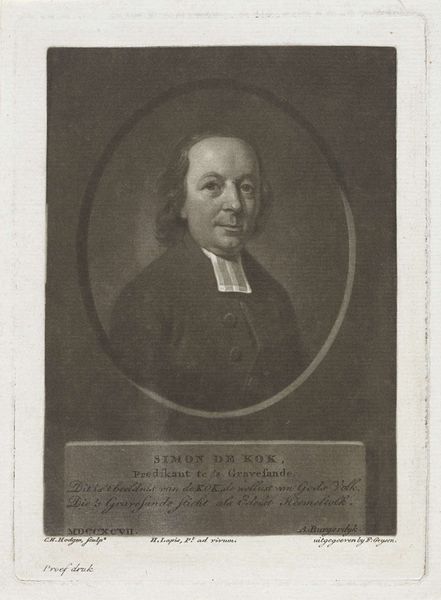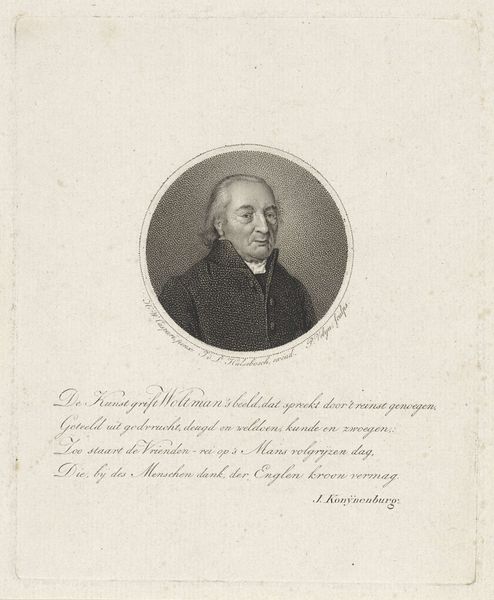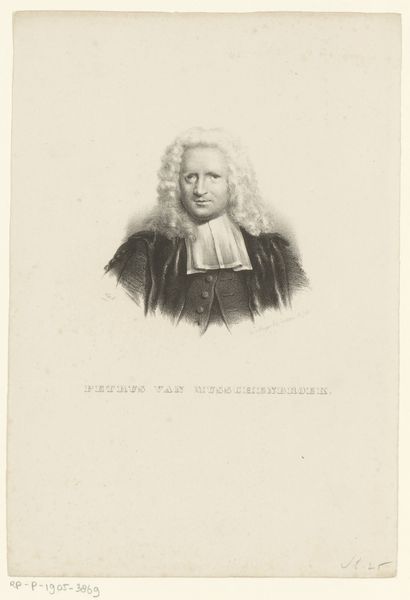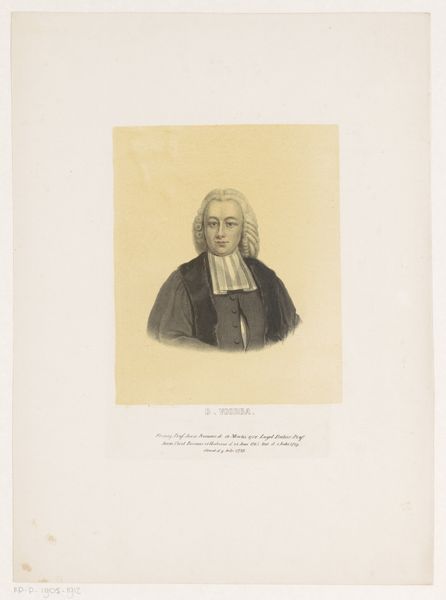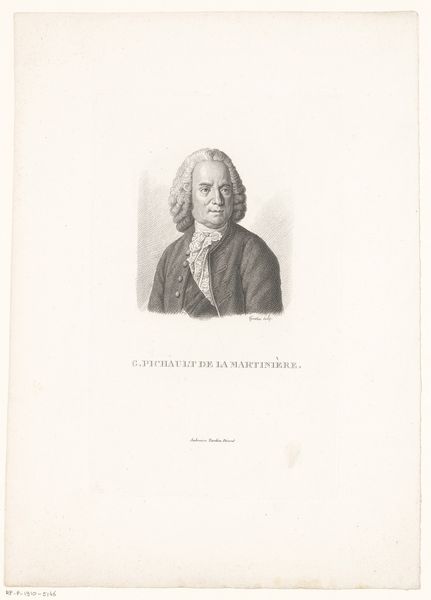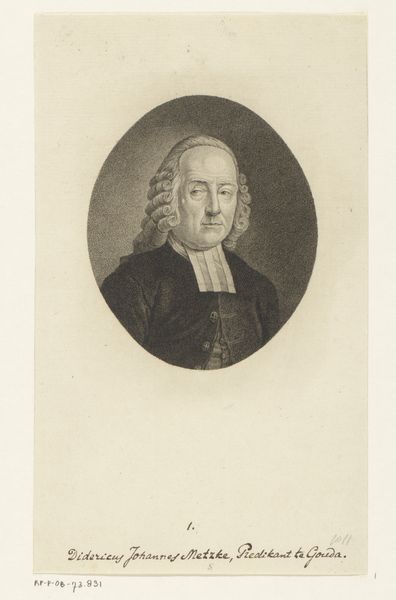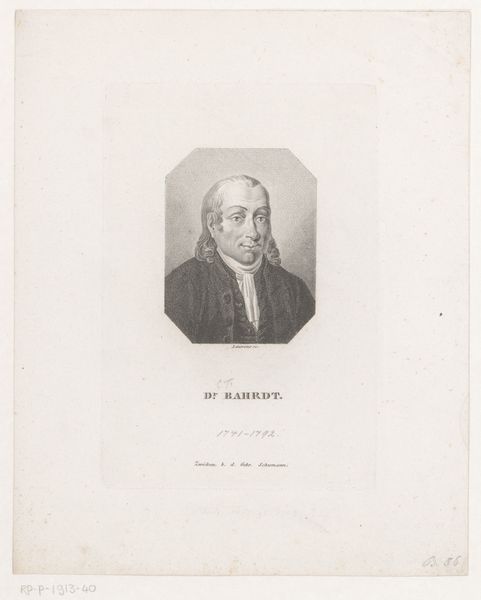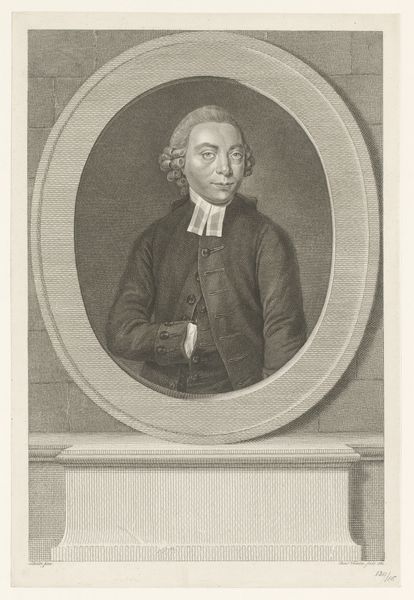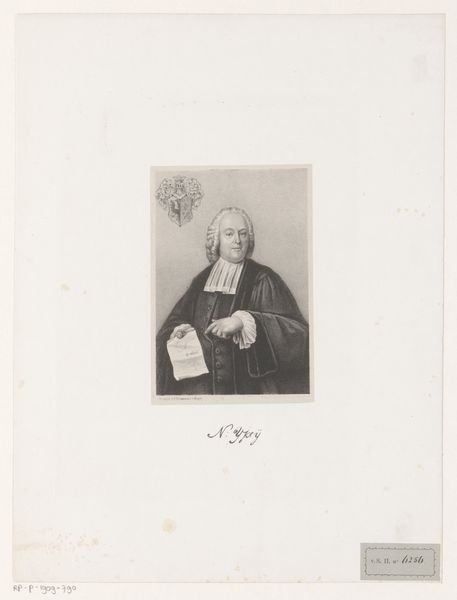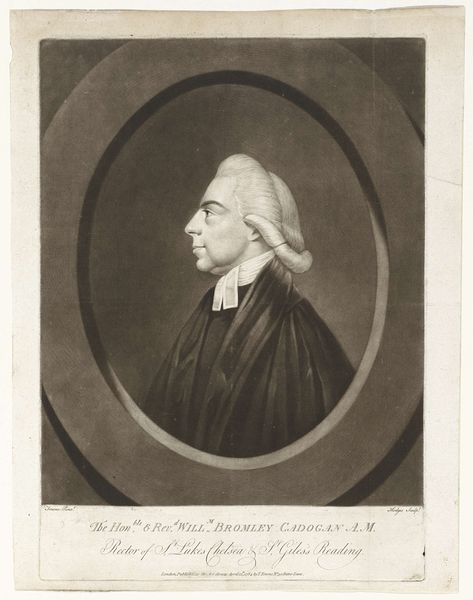
drawing, print, engraving
#
portrait
#
drawing
# print
#
old engraving style
#
pencil drawing
#
romanticism
#
genre-painting
#
engraving
Dimensions: height 220 mm, width 155 mm
Copyright: Rijks Museum: Open Domain
Curator: Here we have "Portret van Jan Floris Martinet," an engraving from around 1837-1840, found at the Rijksmuseum, and attributed to N.M. Schild. Editor: It’s an understated image. Very serious. The muted greyscale and precise lines give it a formal air. I'm interested in understanding the positionality of Jan Floris Martinet during this era. Curator: Observe how the artist uses the engraving technique to create a subtle play of light and shadow. The texture is finely worked. Notice how the stark white collar draws the eye, anchoring the composition, then rising to the softened hair that nicely frames the face. Editor: And the collar signifies so much. Its starkness sets the figure apart—an emblem of religious authority and social position at a time when such distinctions were becoming increasingly scrutinized. How did the church grapple with emerging Enlightenment ideals? I wonder how he perceived this transformation of society, and whether it is reflected in his gaze. Curator: The detail around the face certainly captures a kind of calm, contemplative introspection. You see a mind at work there. What do you make of the framing then, the softness on the sides that keeps us fixed upon that single point? Editor: I find that calculated stillness… unnerving. It speaks to the calculated construction of identity, how power is portrayed, and the very restricted visual vocabulary allowed to men in positions of power during the romanticism era. It asks questions about how images shape and perpetuate ideologies, especially of masculinity. Curator: Indeed. It’s a careful exercise in visual rhetoric. Yet it still manages to convey, despite that reserve, a sense of individuality. A unique, perhaps sympathetic individual. Editor: Perhaps it succeeds too well. It encourages the perpetuation of idealized historical narratives and asks that we remember that powerful historical persons did exist in this era. It becomes increasingly hard to see this representation outside the dynamics of power. Curator: Ultimately, I think this piece invites viewers to slow down and carefully observe the art of representation itself. The piece is not just presenting something to the public, but representing and controlling what is public. Editor: A crucial reminder. Now more than ever, we are in a time when control and truth are at stake. Thank you.
Comments
No comments
Be the first to comment and join the conversation on the ultimate creative platform.
